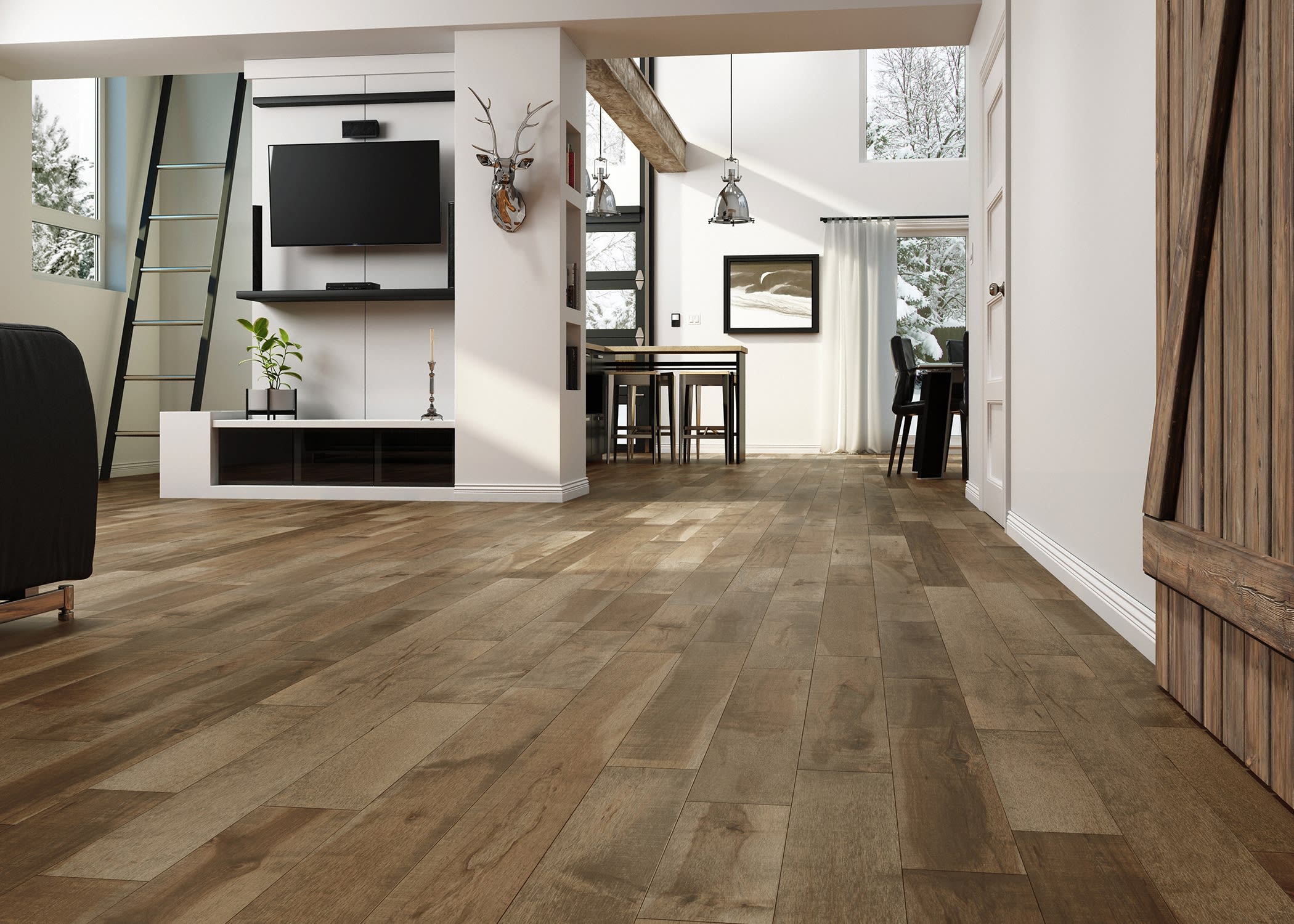- Home
- Education
- Planning Your Project
- How Should I prepare for my new floor
How Should I prepare for my new floor
Once you have decided to install a wood floor, you may wonder what will happen next. Knowing what to expect before, during, and after the work takes place will help ensure a high-quality job.
Before installation
If using a professional floor installer, it is always a good idea to ask for installer references as well as proof of work liability insurance before any work is started. The flooring will need to acclimate in the house, which can vary from 2 days for laminates or up to a month for some solid exotic hardwoods, maintain ideal temperatures of 60º-80º F and humidity levels of 30-50%. Racking out the floor or laying out each piece on the floor, allows the installer to visually inspect the flooring for imperfections that can be cut out or any adjustments that need to be made before nailing. Culling out wood is a normal process in which the installer inspects the flooring during the installation. Any single boards with visual defects are “culled out” or replaced using the added 5%-10% extra material that was ordered for the job.
Repairs
Keep a partial box from your initial installation for any future repairs or board replacements. Touch-up markers or color filler sticks for correcting nicks or chips during and after Pre-finished wood installation is accepted as a normal procedure. Sub-floors such as Particle board and some OSB oriented strand boards are not recommended for nail down hardwood flooring; consult your panel manufacturer for specs. A minimum thickness of 5/8” plywood sub-flooring or 3/4″ OSB is strongly recommended. The thicker the sub-floor the more stable and less bouncy the floor will be. Repair squeaky subfloors before installing the flooring. Hand nailing: The harder exotics like Blood Wood, Brazilian Walnut, Brazilian Teaks, Brazilian Ebony, Strand Bamboo, or Rosewood may need hand nailing if nailing machines create excessive tongue fracture, dimpling, or excessive finish fracture.
After installation
Maintaining indoor temperatures at 60º-80° F and the humidity at 30-50% will add life to your floors and give you years of problem free service. Seasonal cracks are normal and can appear and disappear between floor boards during seasons of high and low humidity. Generally, anything less than the width of a dime is considered normal and will correct itself as seasons change. However because wood is fibrous, it continues to absorb or release moisture trying to equalize itself to the humidity of its environment. As the humidity level begins to decrease, wood releases moisture. When its moisture content drops the wood begins to shrink, gap or surface split, reducing width size. If the humidity level increases, the wood will absorb moisture and begin to swell, cup, or buckle.
Color Changes
Keep in mind that wood is a natural product and no two floor boards will be identical. Variations in appearance are completely normal. As your floor ages, some color change or “patina” can occur. Whether finished or unfinished, all wood can change color over time due to oxidation and when exposed to light. Some species darken in color over time while others tend to lighten. There are no known set values for “color fastness” of a particular species. Certain species, including American Cherry, Koa, Brazilian Cherry, and many other imported species have this tendency to change in color as they age. Some color change is to be expected for all species and a drastic change can be expected for some. This process although normal, can be minimized or accelerated by exposure to direct sunlight. Periodically moving furniture and rugs to equalize exposure to light is a good idea.
Cleaning
Finally, keep your wood floors looking their best by properly maintaining them. Use a cleaning product that’s recommended for your floors and use it regularly to keep them looking beautiful for years to come. Our finishes are Water based Urethanes so whichever product you choose to use, ensure its compatibility with your new flooring.
Rugs, Mats, and Pads
Best choices for rugs, mats or pads are natural, solvent free waffle type rubber, untreated natural fibers such as wool, jute or 1/4″ chopped urethane. Avoid sticky or tacky backings. The plasticizers in these can attack and discolor finish. Plasticizers may also be present in the backings of some carpets. We hope these guidelines help make your new-floor experience as care-free as can be. Follow these steps, and your floor will be a beauty – and stay that way!
For Purchase of, or help with an installation call
LL Flooring Tech and Install Team
1-800-651-1635



